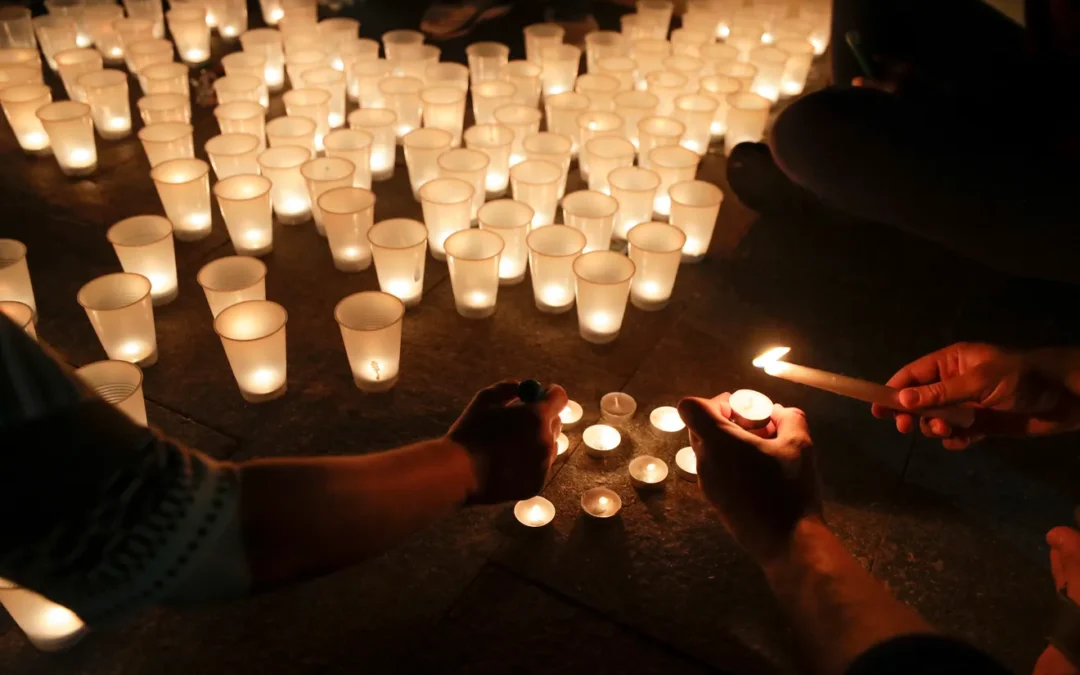This column contains discussion of suicide. If you or someone you know might be struggling with suicidal thoughts, you can call or text the 988 Suicide & Crisis Lifeline at 988 or 1-800-273-8255, or chat online at 988lifeline.org
For Republicans in Congress, the rise in deadly gun violence has so far been insufficient to trigger any sort of meaningful legislative action. The Bipartisan Safer Communities Act aside, our hyperpartisan politics have rendered even commonsense gun safety measures a nonstarter for this GOP.
While Republicans continue to delay, Americans continue to die, with suicide being the nation’s leading cause of gun-related deaths. Since January, nearly 17,000 have died by firearm suicide.
After observing National Suicide Prevention Week, we – one of us a leading advocate for gun violence reduction, the other a survivor of firearm suicide loss – offer that reframing the gun control debate around suicide prevention can help build consensus for commonsense solutions and ultimately save lives.
Which states have the highest rates of gun suicide?
Firearm suicide touches all Americans, but it does not do so equally. According to data from the Centers for Disease Control and Prevention, white men die at the highest rate. White men are also the most likely to own a gun – and to vote Republican.
Furthermore, four of the top five states with the highest rates of firearm suicide – Wyoming, Montana, Alaska and Oklahoma – are states with a Republican governor and dangerously loose gun laws. Those same states are in the top seven for gun ownership rates. (The states with the lowest rates of gun ownership are blue states with stricter gun laws and some of the lowest rates of firearm suicide.)
If Republicans in Congress were to recognize – or admit – the extent to which legislative inaction on guns is killing their voters and constituents, the only acceptable response would be to support commonsense gun control measures.
What might some of those commonsense measures be?
Red flag laws, on the books in 21 states, function by allowing a court to temporarily block an individual’s access to firearms if a family member or law enforcement can prove that their mental state renders them a threat to themselves or others. Indiana’s legislature passed red flag legislation in 2005, and it was signed into law by Republican Gov. Mitch Daniels. In the decade following the law’s enactment, the state experienced a 7.5% drop in its gun suicide rate.
How not to cover gun violence:Jacksonville shooting has already faded from memory. Victims deserve better from the media.
A federal mandatory waiting period for firearms purchases would require that a certain amount of time elapse before someone who has purchased a gun can actually possess that gun. This commonsense policy could buy precious time for a suicidal individual to reconsider their decision or for loved ones to intervene. Mandatory waiting periods are already saving lives in 11 states – including in Florida, where in 2018 Gov. Rick Scott, also a Republican, signed a three-day waiting period into law.
It’s time that members of Congress afford all Americans these lifesaving protections.
How mental health resources can help cut gun violence.
Some opponents of reform argue that simply investing in mental health resourceswill solve this crisis. States should absolutely make mental health resources more widely available. It is interesting, though, that many of the same Republican leaders who insist that we focus on expanding mental health services simultaneously oppose the expansion of programs such as Medicaid, which could help pay for those services.
We say it is a “both/and” rather than an “either/or.” Mental health resources are only beneficial if those who need help remain alive long enough to receive it. This means we must take reasonable steps to help protect those who wish to harm themselves.
Treating mental health:Police shouldn’t handle mental health calls. Reform is critical for public safety.
Others might argue that making it more difficult to acquire a gun will simply lead suicidal individuals to seek out other means. Data suggests, however, that reducing firearm suicide attempts would result in a significant reduction in overall suicides. This is likely because nearly 90% of firearm suicide attempts end in death while suicide attempts by other means are far less likely to end in fatalities.
Enacting commonsense gun reform – while yes, expanding access to mental health treatment – would save lives. It is estimated that if every state had the same firearm suicide rates as those states with the strictest gun laws, more than 70,000 lives would have been saved over the past 20 years.
Such facts should compel any rational and compassionate legislator to act.
By focusing the conversation on suicide prevention, one cannot reasonably claim that gun violence only affects certain communities, or that it is an issue worthy of debate only when another mass shooting occurs. Americans of all backgrounds are dying every day from firearm suicide. The only way this changes is if Republican leaders show some courage and use their power to put people over politics.
Click the link below to read this article:
